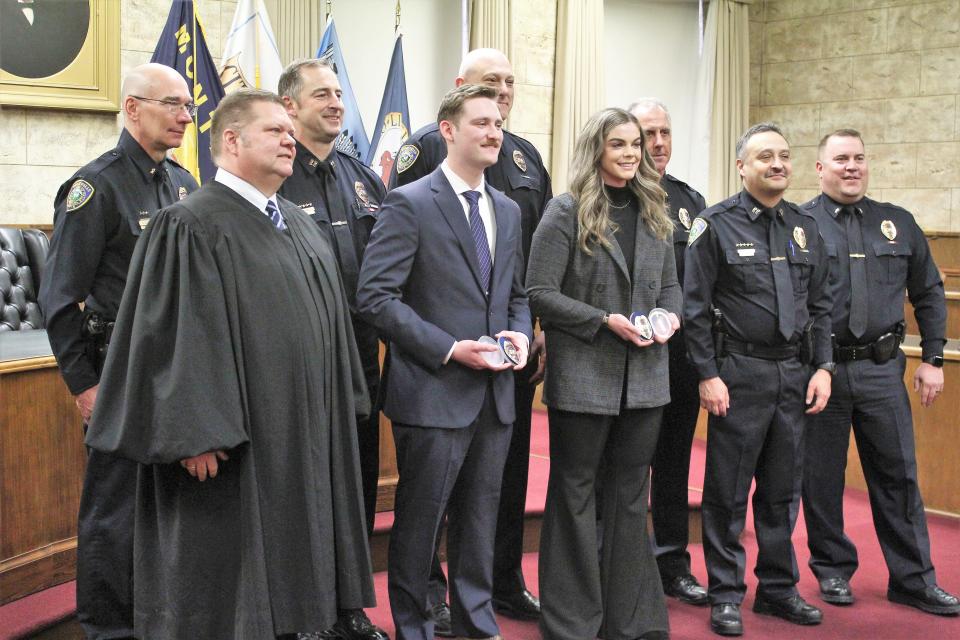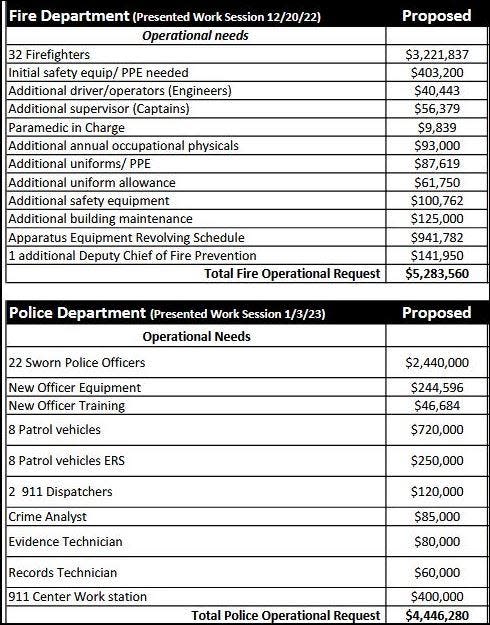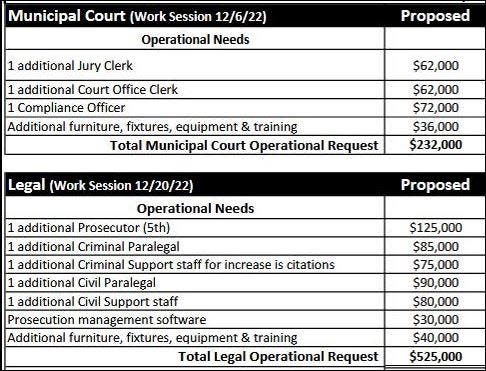City officials search for solutions to public safety budget shortfalls

For well over a decade law enforcement in Great Falls has sought to make the most efficient use of the resources it has had at hand.
In 2009, the Great Falls Police Department asked the city’s taxpayers to approve a levy request that would have added 17 new employees to its roster. That proposal failed overwhelmingly with 60% of voters rejecting the request. Since then, the department has operated under a near static budget, with annual increases capped at 1% or less of total property values.
According to Great Falls Chief of Police Jeff Newton, the department’s static budgets have meant that the city’s officers frequently find themselves with little or no backup.
“There are times when we all have had to engage in calls that we really probably shouldn’t doing alone, but you have nobody else to deal with it,” he said. “I was listening to our radio yesterday and our officers were calling for help, but we don’t have anybody available to respond to that, so stand by. We’ll get to it when we can.”
Unlike what is routinely portrayed in television crime shows, Great Falls police almost never operate with more than one officer in a patrol car at a time. Solo patrols are the rule, not the exception. Newton said that the only time you’ll see two officers in a patrol car is during a training situation, when an experienced “training officer” accompanies a new officer recently hired to the force. If a solo officer encounters a potentially dangerous situation, they must rely upon the arrival of another to provide backup
“We’ve seen an increase in that,” Newton said of the wait time Great Falls police face when they encounter a hostile situation, “whether it be a violent crime or individuals assaulting or resisting arrest, particularly if there are weapons involved.”
A second consequence of static funding has been that officers are commonly unable to respond in person to low level property crimes. To address these types of incidents the department has turned to on-line reporting rather than in person response.
“Some folks will report that unfortunately their car was broken into, but let’s be honest. Unless we have surveillance video or an eye witness the likelihood of finding that person is pretty challenging,” Newton said. “So, they’ll do the online reporting and get a case report number for their insurance. That’s another way to make it more efficient for our citizens and to make it more efficient for us too. We’ve done that for several years now.”

In the fall of 2022, the Great Falls Police Department used time-tracking software to analyze how its officers were using their time on duty. One of the study’s conclusions was that officers in Great Falls had a very limited ability to engage proactive crime prevention.
“I tasked my captain with taking a couple of squads and documenting how much time they actually have, to differentiate between what people perceive and what they’re actually doing,” Newton explained. “Our patrols run on 10-hour 40-minute shifts. We found that out of that 10 hours and 40 minutes our officers had essentially one hour of time for proactive patrol."
“Keep in mind that one hour isn’t consecutive,” he added. “It may be 10 minutes here, maybe 15 minutes there. The rest of the time they’re responding to calls, writing reports, and dropping off evidence. When officers go from call to call to call there’s little time for proactive patrol.”
The strain on the city’s criminal justice system extends to it municipal court and legal departments. In December 2022 the Great Falls City Commission adopted an ordinance establishing a second Municipal Court to help lighten the load on the city’s overstretched court system. A new municipal judge is scheduled to office this coming December.
“That will allow the court system to process more citations, but it also sets up a situation where at any given time our three prosecutors will have to be in different courts,” said City Attorney David Dennis. “It’s going to be very difficult for us to staff that two-court system with the available resources that we have now.”
“The other thing that we’re struggling with is even being able to hire prosecutors,” Dennis added. “We’ve had a prosecutor position open now for seven months that we haven’t been able to fill. It’s an extraordinarily stressful job on top of that. It’s stressful all day long and we typically work nine and 10-hour days of either being in court or preparing for court. They don’t ever get a day when it’s not stressful and that’s just not the kind of work that everybody’s cut out for.”
In April 2021, the Great Falls City Commission launched a Crime Task Force to review and evaluate public safety in the city. The task force concluded that funding for the city’s police, fire, municipal court, and legal departments is inadequate, and that the city’s general fund would never be able to sufficiently meet the service level desired by taxpayers.
On March 7, city commissioners voted unanimously to submit a Public Safety Levy request to voters that would raise $10.7 million annually to expand funding for the city’s fire, police, municipal court, and legal departments. If approved by Great Falls voters this fall, the Public Safety mill levy would raise property taxes on a $200,000 home by $280.11 annually.


If the proposed mill levy increase passes it would allow the Great Falls Fire Department to add 32 firefighters to its duty roster, and to replace old and worn-out equipment that is now nearing the end of its useful service life. The Great Falls Police Department could add 22 sworn officers to its current contingent of 88, and purchase eight new patrol vehicles and a new 911 dispatch workstation to properly equip them. The Municipal Court and City Attorney’s Office would be able to employ additional staff and obtain new equipment to support the greater workflow anticipated because of an increase in police presence.
City commissioners also narrowly approved a $150,000 budget expenditure to hire the Wendt Agency advertising firm to help educate voters about the public safety issues the city is currently facing. In doing so the city has to walk a narrow line between educating the public and openly advocating for the Public Safety Levy’s passage.
“What we’re aware of here and in the city commission meetings is that there’s a large portion of the community that is not tuned in and understands the needs that the city has going forward,” explained Great Falls Mayor Bob Kelly. “Many, many people don’t pay attention to what’s going on in their community unless they have a problem. People don’t recognize the fact that fire department response times are critical until they have a fire. They don’t understand that having EMS and ambulances readily available is a big deal, especially if they’re a 35-year-old, healthy couple and have never been in an ambulance.
“Our goal is to reach out to the community and kind of bring them in through the campaign that we’ve got going to let them know the issues that we’re facing,” Kelly added. “They may think that there’s a better or a different approach, but they need to know the issues and why this request is in front of them. It’s their choice, and we must continually make sure that the public knows that we’re not here to make their minds up for them, but to clarify the concerns that we have.
“We are not going to be out advocating to pass this, but we are going to make sure that people are making informed decisions.”
This article originally appeared on Great Falls Tribune: Great Falls police/municipal court struggle to maintain services

